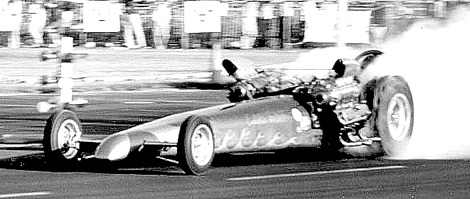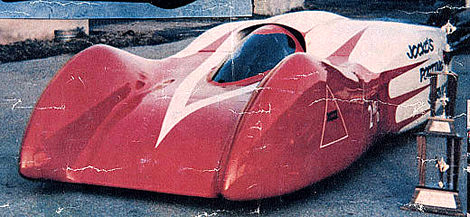 |
"Jenkins came in one day and had these plans for building a trick
Vega Pro Stocker. He and my dad, Walt, went over the drawings, and construction
was begun on the car. What came out was not the all-tube chassis race
cars of the day because there were some stock elements to the car. The
front end was stock as were the frame rails of the car, but it did have
a round-tube, full roll cage, spider-webbing on the car's underbelly,
and trick four-link suspension in the back.
"The car was quite a leap ahead of what was out there. For one
thing, the set-up allowed for tremendous strength to the unibody of
the car, and it allowed for terrific adjustability to the rear suspension
set-up. As most know, the car won Pomona, and won the NHRA world title
that year. The next year, we got 13 orders for that type of car, although
there was a difference.
"Jenkins' crew had set up a race car shop called SRD. We would
build the bare-bones chassis, and then we'd ship it over to SRD and
they'd finish it up. - Scott Weney
So, there you have our choices for the 12 most important innovations
during the past 50 years that have made drag racing what it is today.
Some ideas, however, just didn't work too well on the track.
TWIN-ENGINE DRAGSTERS

They weighed too much. In the period book-ended by 1959 through 1962
when tires smoked the whole quarter, the cars were competitive, especially
on gas. In fact, the twin's last stand came in 1971 when twin-engine
gas dragsters completely dominated the class. In 1972, NHRA pulled the
plug on Top Gas and it was "bye, bye baby."
STREAMLINED DRAGSTERS

Save for "Jocko" Johnson's streamliner (above) which ran a record 8.35
in 1959, Garlits' and (to a lesser degree) Gary Ormsby's entries of
1986, the streamliners remain a colorful asterisk in drag racing history
books. Too much weight, too much down-force; there were a number of
reasons why they never really caught on. If nothing else, though, some
of the most beautiful drag race cars were of the streamlined variety.
|
|